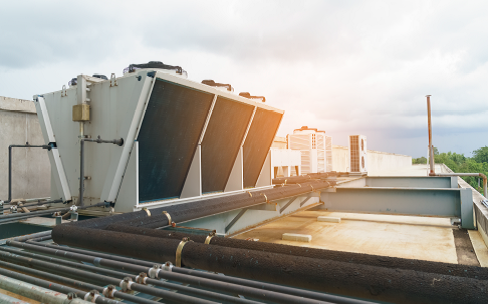
In the course of manufacturing or fabricating goods, a company is likely to produce more than the product itself; it is also likely to create emissions of some sort.
These emissions can have a serious impact on the environment and the air workers breathe. Left unchecked, workers may suffer ailments ranging from headaches, fatigue or asthma, to more serious problems, leaving companies vulnerable to fines and legal action.
Fortunately, regulations have been established to protect human health and the environment by demanding specific measures to be put in place to control emissions and prevent impacts to indoor and outdoor air quality. Unfortunately for facility owners and employers, it can be difficult to navigate through the complex regulations to determine which requirements apply and the most cost-effective way to comply.
KNOW YOUR FEDERAL REGULATIONS
Any facility responsible for releasing contaminants to air, either indoors or outdoors, should be aware of federal regulations from the Occupational Safety and Health Administration (OSHA) and the United States Environmental Protection Agency (USEPA). OSHA’s workplace safety oversight includes requirements which dictate acceptable air quality at a facility.
OSHA has numerous regulations around air quality, each one responsible for regulating air quality in terms of permissible exposure limits (PELs) for workers based on health protection. These PELs are typically 8-hour time-weighted averages which limit how much of a substance a worker can be safely exposed to over a standard shift. If the worker’s exposure exceeds that limit, the employer can be cited and fined.
The USEPA’s focus is on the health effects of hazardous substances on the surrounding community. As a result, its rules are centered around limiting environmental pollution. USEPA developed regulations under the Clean Air Act that limit how much of a substance a facility can release into the environment based on human health risks.
The USEPA maintains a list of the AIR EMISSIONS SOURCES IT REGULATES on the epa.gov website.
MEET STATE AND LOCAL REGULATIONS
While OSHA and USEPA rules dominate the regulatory landscape, many states and local governments also set emissions requirements that restrict allowable emissions. The requirements enforced by states and local agencies must be at least as stringent as those set by USEPA and OSHA.
For example, the New York State Department of Environmental Conservation (NYSDEC) has established unique requirements and procedures tailored to the State’s air quality needs. In addition, the NEW YORK CITY DEPARTMENT OF ENVIRONMENTAL PROTECTION (NYCDEP) also enforces equipment, building and construction emissions requirements which only apply to facilities in New York City.
BE PROACTIVE IN YOUR APPROACH
It is up to owners and employers to do their due diligence and research the applicable air quality regulations that impact their facilities. Creating a safe environment not only builds worker loyalty and provides goodwill with the local community—it’s the law.
Unfortunately, some facility owners and employers wait to be inspected by OSHA or USEPA before putting appropriate Environmental Health and Safety (EHS) protection and preventive measures in place. This reactive approach to air quality can be costly. As a case in point, respiratory protection violations were the fourth most cited OSHA VIOLATION IN 2018. A maximum penalty can be up to $13,260 per violation.
In addition, OSHA compliance demands that employers maintain proper documentation, in some cases for over 30 years. For instance, the Safety Data Sheets for every chemical used in their facility must be kept on file for 30 years. The reason for this long document retention period is that a health impact attributable to a chemical may not manifest for 20 or more years after the exposure. OSHA puts the onus on employers to prove they implemented proper measures and controls.
Putting a program in place to regularly review all requirements and practices to meet them can help an organization achieve and maintain compliance, build worker loyalty, and avoid penalties.
Click here to download our full Air Quality Guide: Controlling the Air Quality in Your Facility: What You Need to Know About Your Regulatory Requirements and Options for Compliance.
